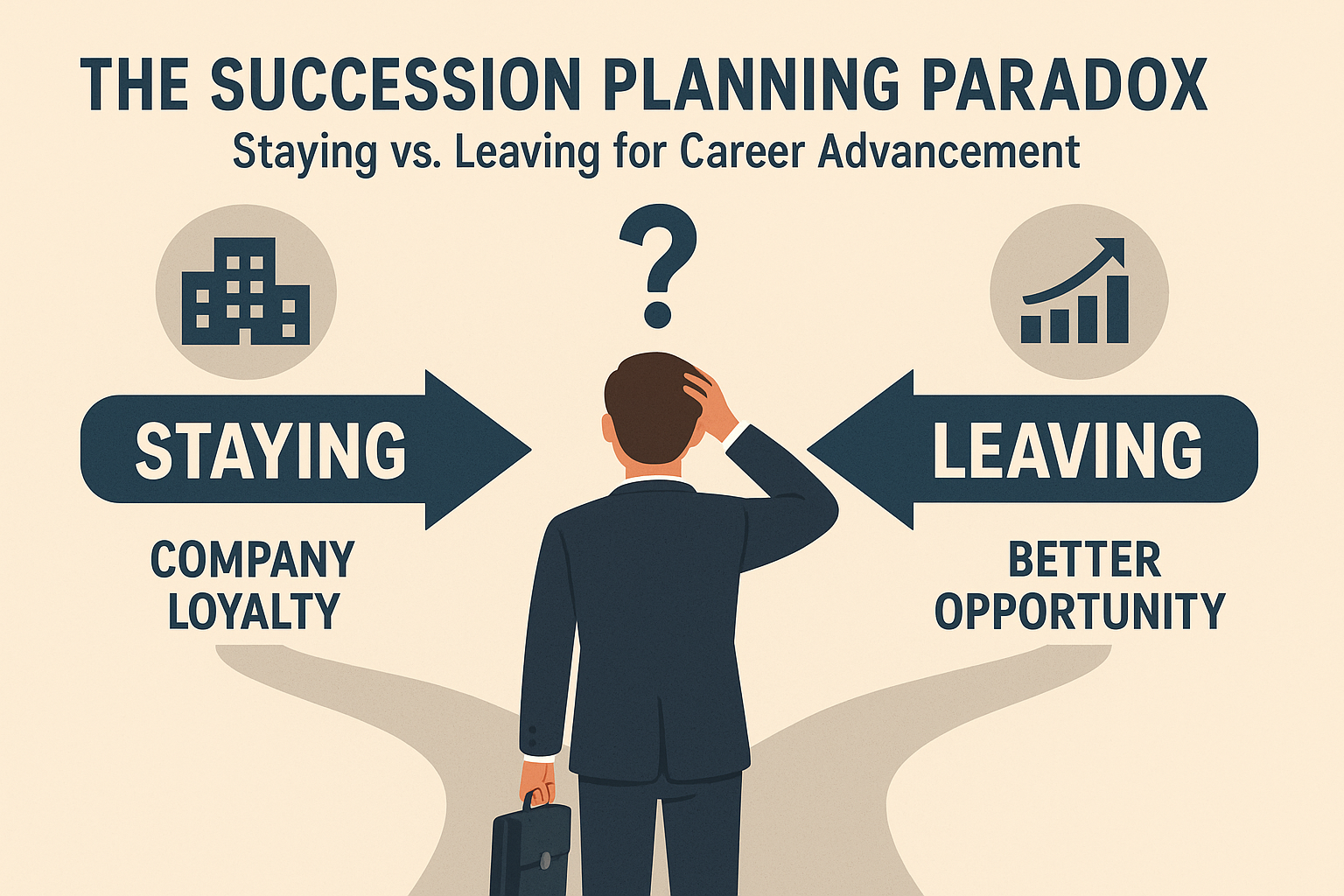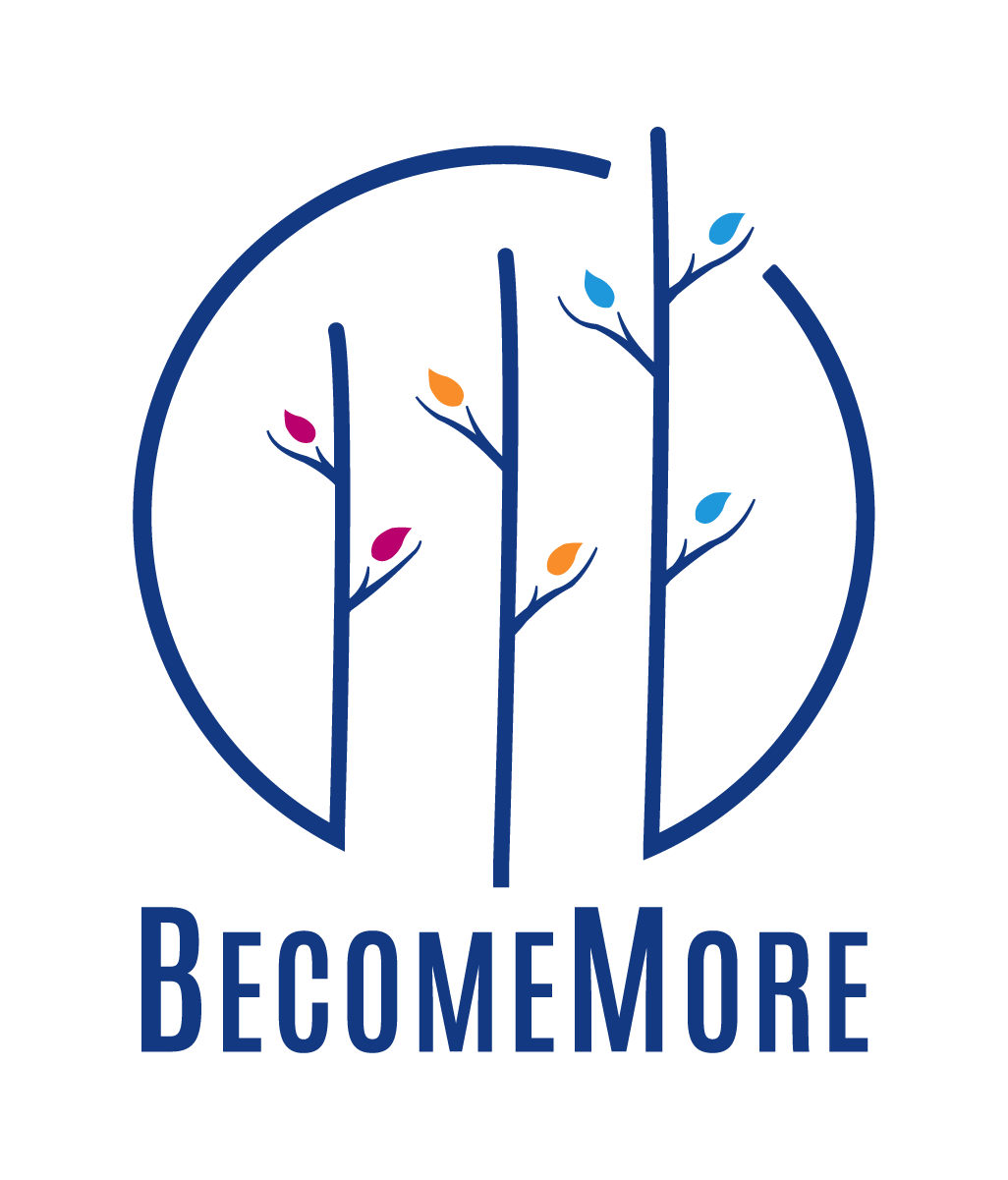2 min read
Succession Planning Paradox: Staying vs Leaving for Career Advancement
![]() BecomeMore Group Staff
:
9/23/25 10:27 PM
BecomeMore Group Staff
:
9/23/25 10:27 PM

Career advancement within an organization is often a complex journey filled with perceptions, opportunities, and challenges. Many professionals believe they must leave their current employer to truly move up the ladder or gain the recognition they deserve. This perception isn't entirely unfounded, but it's worth examining the nuances of internal career growth and succession planning.
Organizations typically fall into one of two categories when it comes to employee development. Some create intentional learning environments where staff can continuously expand their skills and take on new challenges. These companies view talent as something to nurture and develop over time, providing pathways for growth that don't necessarily require changing employers. Other organizations operate with rigid structures, placing employees in metaphorical boxes based on their current roles or departments, limiting their potential for growth and cross-functional movement. This rigidity might stem from established protocols (like requiring international experience for advancement) or simply from a lack of vision about how employees can evolve beyond their current positions.
The "buy, build, boost, or boot" philosophy encapsulates how organizations approach talent management. "Buying" talent means bringing in external candidates who already possess the necessary skills—typically at a premium cost. "Building" or "boosting" refers to developing internal talent through training, mentorship, and strategic opportunities. Meanwhile, "booting" addresses the necessary but often uncomfortable process of removing underperforming employees to maintain organizational health. Each approach has merits, but the most successful organizations typically employ a balanced strategy that includes all elements.
An uncomfortable truth many employees discover is the salary disparity between internal promotions and external hires. Organizations commonly limit internal raises to around 3%, while external candidates may command significantly higher compensation packages for the same roles. This financial reality drives many talented professionals to job-hop every few years, ultimately earning more over their careers than those who remain loyal to a single employer. Smart organizations combat this trend by identifying high-potential employees early, creating clear advancement paths, and occasionally breaking from standard compensation practices to retain exceptional talent. However, this approach requires genuine commitment from leadership and often faces resistance from traditional compensation structures.
Beyond compensation, career satisfaction encompasses much more than monetary rewards. While fair pay is essential, research consistently shows that money functions more as a dissatisfier than a satisfier in the workplace. True job satisfaction typically stems from meaningful work, mutual appreciation between employee and employer, and continuous growth opportunities. Even without promotions, roles that provide intellectual challenges and the chance to develop new skills often create more fulfillment than stagnant positions with higher salaries. This explains why some professionals choose to remain with organizations that pay less but offer richer growth experiences and work environments.
For individuals seeking to break free from perceived limitations within their organization, proactivity is essential. Rather than waiting for the organization to provide development opportunities, successful professionals actively pursue skills they anticipate will be valuable in the future. They make themselves indispensable by solving emerging problems before being asked and demonstrating value beyond their current role description. This self-directed growth not only positions them for internal advancement but also makes them more marketable should they ultimately decide to pursue opportunities elsewhere. The most successful career paths often combine periods of internal growth with strategic moves to new organizations when internal advancement reaches its natural limits.

